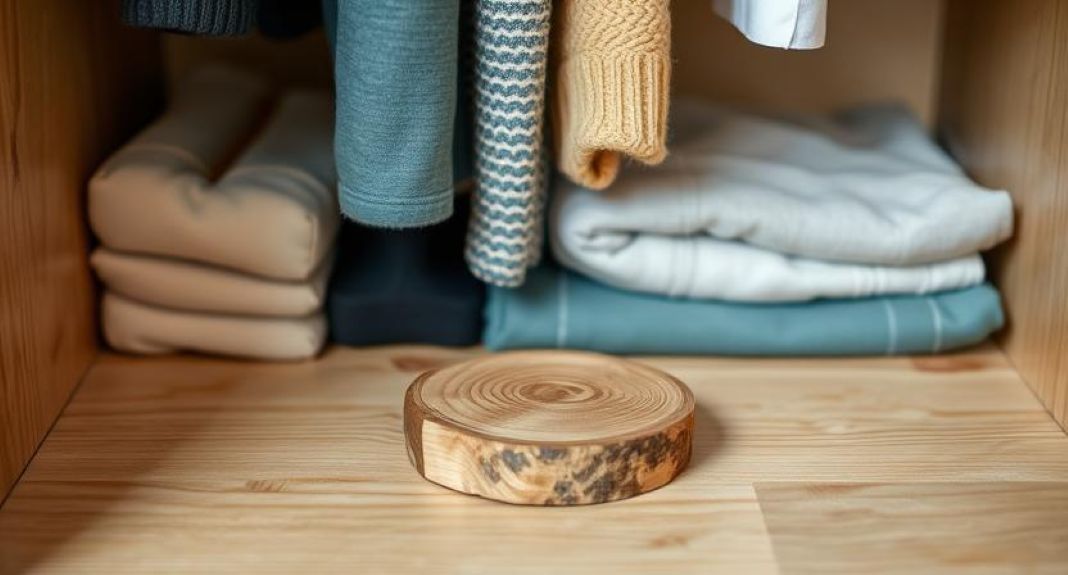How do you properly maintain a bespoke suit to extend its lifespan?
A bespoke suit is a significant investment, designed to fit your exact measurements and style preferences. Proper care will keep it in pristine condition, maintaining the structure, fabric integrity, and sharp silhouette. Storing it correctly, cleaning it properly, and handling it with care will prevent premature wear. With regular maintenance, a high quality bespoke suit can last over a decade, always looking refined and well-fitted.
Here's What We Have Covered In This Article
Storing Your Suit Properly
What is the best way to store a bespoke suit?
A bespoke suit requires proper storage to preserve its shape and fabric quality.
- Use a Wooden Hanger – A contoured wooden hanger with broad shoulders supports the jacket’s natural shape, preventing fabric stretching or shoulder collapse.
- Keep It in a Breathable Garment Bag – A breathable garment bag shields your suit from dust, moths, and excess moisture while allowing airflow to prevent musty odours.
- Give It Space in Your Wardrobe – Overcrowding can lead to wrinkling and misshaping. Ensure your suit hangs freely without pressure from other garments.
Keeping Your Suit Clean
How should you clean a bespoke suit without damaging it?
Bespoke suits are crafted from delicate fabrics such as wool, cashmere, or silk blends. Harsh cleaning methods can degrade the fibres.
- Brush It After Each Wear – A soft-bristle suit brush removes dust, lint, and surface debris, preventing dirt from embedding into the weave.
- Spot Clean Small Stains – Blot spills with a damp cloth immediately. Avoid scrubbing, as this drives stains deeper into the fabric. For persistent stains, seek professional cleaning services.
- Dry Clean Only When Necessary – Excessive dry cleaning strips natural oils from the fabric, weakening the fibres. Aim to dry clean your suit no more than two or three times a year.
Preventing Wrinkles and Creases
Is steaming or ironing better for a bespoke suit?
Steaming is the safest way to remove wrinkles while preserving the fabric’s natural structure.
-
Use a Garment Steamer – Steaming relaxes the fibres and removes creases without applying direct heat, which can damage delicate fabrics.
-
Iron With Care – If ironing is necessary, always use a pressing cloth and a low heat setting to protect the material. Never press directly onto wool or fine fabrics, as this can create shiny patches.
Giving Your Suit a Break
Why should you rotate your suits?
Wearing the same suit too frequently can cause stress on the fabric and seams, leading to premature wear.
-
Don’t Wear It Consecutively – Give your suit at least a day to recover between wears, allowing the fibres to breathe and regain their shape.
-
Get a Spare Pair of Trousers – Trousers experience more wear than jackets, especially around the seat and knees. Having an extra pair extends the suit’s longevity.
Looking After Your Suit in Different Seasons
How do you care for a bespoke suit in summer and winter?
Different seasons bring different challenges for suit care.
-
Summer Suit Care – Wear an undershirt to absorb sweat and protect the suit’s lining. After wearing, hang the suit in a ventilated area to air out moisture and odours.
-
Winter Suit Care – Wool suits can absorb moisture from damp conditions. Store them with cedar blocks to prevent mildew and moth damage.
Protect Your Suit For Years
Keep your bespoke suit looking sharp with expert care tips. Learn how to store, clean, and maintain it for long-lasting wear.
Travelling with Your Suit
How do you keep a bespoke suit wrinkle-free while travelling?
Transporting your suit correctly prevents creases and fabric distortion.
-
Use a Quality Garment Bag – A structured garment bag provides protection and helps maintain the jacket’s shape.
-
Steam It Upon Arrival – Once at your destination, hang your suit and use a steamer to remove travel creases. Hanging it in a steamy bathroom can also help smooth out minor wrinkles.
Wearing and Handling Your Suit the Right Way
-
Avoid overstuffing pockets, which can stretch the fabric and distort the suit’s drape.
-
Always unbutton your jacket before sitting to relieve tension on the seams.
-
Hang your jacket properly rather than draping it over a chair to maintain its structured silhouette.
Keeping Moths and Fabric Damage Away
How do you protect a bespoke suit from moths and fabric deterioration?
Natural fibres like wool are vulnerable to moth damage and environmental wear.
-
Use Cedar Blocks or Moth Repellent – Cedar wood and lavender sachets deter moths while keeping the fabric fresh.
-
Let It Breathe – Airing out your suit occasionally prevents odours and moisture build-up, especially if it has been in storage for an extended period.
Avoid Common Suit Care Mistakes
Dry cleaning too often? Using the wrong hanger? Discover the best ways to preserve your bespoke suit’s quality and fit.
When to Make Adjustments or Repairs
When should you take a bespoke suit to a tailor for repairs?
Even wellmaintained suits need occasional adjustments to ensure they fit perfectly.
-
Signs Your Suit Needs Attention – Loose stitching, sagging shoulders, or a change in fit indicate it’s time for alterations.
-
Find a Skilled Tailor – A professional tailor can make minor adjustments, such as tapering sleeves or taking in the waist, to keep your suit looking sharp.
Final Tips for Looking After Your Suit
-
Brush your suit before and after each wear to remove dust and maintain the fabric’s freshness.
-
Store it in a breathable garment bag to protect against dust, moisture, and fabric damage.
-
Rotate your suits to distribute wear evenly and extend their lifespan.
-
Spot clean small marks rather than relying on frequent dry cleaning.
-
Choose a specialist dry cleaner who understands fine tailoring and high-end fabrics.
A well cared-for bespoke suit will always look sophisticated, feel comfortable, and serve you well for years.
Need An Alteration or Repair?
A well-fitted suit is timeless. Find out when to visit a tailor for adjustments and keep your bespoke suit in top shape.
Frequently Asked Questions
How often should I dry clean my bespoke suit?
Only when necessary and typically no more than two or three times a year.
Can I iron my suit at home?
Yes, but always use a pressing cloth and a low heat setting to prevent fabric damage.
What is the best way to store a bespoke suit?
Use a contoured wooden hanger and a breathable garment bag in a well-ventilated wardrobe.
How do I remove wrinkles without an iron?
A garment steamer is best, but hanging your suit in a steamy bathroom can also help.
How long does a bespoke suit last?
With proper care, a bespoke suit can last anywhere from five to ten years or even longer.




